|
With a little help from my friendly carpenter, Andy, my 'Lilies' panel is now installed in Ann and Phil's sitting room in Charlbury. Placing it in the window space was a very satisfying moment. If anything, the effect is better than I had anticipated. It looks very fitting and 'meant' at the back of the window space, which seems deep, as it such a narrow 'arrow slit' window. It immediately had an effect on the whole room: for instance, the black of the lead picks up the black of the stove, and even the TV. Best of all, the clients are very pleased, and look set to enjoy living with it. "We are so enjoying the 'Lilies' window Anna has made for us - it has enhanced our sitting room with its beautiful design and glowing colours, and it was fun planning it with her." I am really pleased to have added colour, richness and life to what was an impersonal, narrow window.
0 Comments
A trip to North Wales last week offered the opportunity to take the scenic route and drive up via Chester to see a window I had heard about. Ros Grimshaw won a fabulous commission to design and make a Millennium Window for Chester cathedral. Installed in 2001, it is large, very striking window in the west wall of the refectory. It depicts the hand of god moving through the six days of his creation of the world, from the stars and planets, to the plants and creatures, such as ourselves. What has touched people particularly is the personal imagery she has included. She has Parkinson's disease, and the imagery includes the scan of her Parkinsonian brain (above, centre), and a foetus in the womb (above, right).
She has overcome her considerable, and increasing, difficulties to celebrate creation, and she has written a book about the journey, called 'Six Days'. I hope, like God, she rested on the seventh day, to look upon her work and see that it was good. For several months I have been mulling a personal project about creation, in particular, about separating the light from the dark. Seeing the Chester Creation Window inspires me to set aside some time this summer to develop my ideas and experiment with ways of expressing them. I was asked to design and make stained glass to fill a very narrow 'arrowslit' window in the sitting room of a house in Charlbury. The house is modern, but built in traditional Cotswold materials. Most of the light in the room floods in from large full height windows to the garden. This little window is to the side, facing West, where it catches the sinking sun. The clients were open to the idea of an abstract or semi-abstract design, and initially only imagined having a panel within the top of the window space, being concerned not to lose too much light. I thought a whole window would work better, with more happening, in richer darker colours, at the top, fading to clearer glasses at the bottom. The tall narrow shape was a design challenge in itself. Happily, while I was musing, my husband bought home some lilies, which I always enjoy drawing. It struck me that I could take a visual slice of the lilies in the vase, with intricate parts of the lily flowers above, and the simpler lines of the stems below. I could even use the water line. I took initial colour ideas from some Japanese prints in the room: rich amber and blue, and I planned to use pale, reamy, bubbly glasses for the underwater area. Gradually naturalistic drawings were simplified into a set of designs to show the clients: essence of lilies and water, not all the detail. Happily, we agreed on the best design. My next step was to source all the materials, make the full size cutline drawing and get making. It is quite a process, and took me four weeks. Here is the slideshow: Even though the panel is now complete, and the frame is strengthened with reinforced lead, plus the soldering and cementing, I will be cautious in handling it, even when it is fully dry. I am dying to see it upright against the light, but I must wait until I can take it to the client's house and get it set into the window cavity with a wooden frame. I do hope they like it.
I returned from a week walking the levadas in Madeira with some strong impressions I wanted to capture: towering sea cliffs, lush tropical plants and flowers: palms of every kind, bananas, banks of agapanthus lilies, datura, lilies growing in the crooks of tree branches, and above all, the extraordinary Bird of Paradise flower. I returned with photos and sketches and started making thumbnail designs. With Artweeks coming up, I thought I'd make some work for the garden - how about tropical flowers to hang in English trees? I set about cutting pieces of Spectrum glass to fuse together in the kiln, always creating a space for attaching a hanging loop. Once they were safely in the kiln, I had a lovely time playing with the waste pieces. Before I knew it, a Bird of Paradise was being formed, which I could sandwich in-between two layers of transparent fusing glass to create a circular panel. With Birds of Paradise on my mind, and circles, I turned to the circular cast iron frame I bought in Bristol, with the intention of making a large panel for a garden. There were times when I thought only a fool makes a circular panel - it is much, much harder to cut and in particular to lead, as the normal method of bracing it against the corner made by two straight battens doesn't apply. After some head-scratching, my lovely husband made me a semi-circular jig. Mark 2 worked well. It was very satisfying when I had finally wiggled the last piece into place and could close the circle. I can't wait to see it in the cast iron frame ready for the garden. I will be showing it in Artweeks, alongside other possible designs, to be made to order. I decided to set aside a week for some linocut printing, which I still enjoy, even though I only got involved with it while my studio was being built and I couldn't work in glass. I began by trying to make a design based on the fantastic vertiginous view from the rocky sea cliffs of Cabo Girao, looking down past the aloe vera and the prickly pears, right down to the terraced fields and the Atlantic below. I then returned to the Bird of Paradise flowers for a two colour print. I discovered a wonderful orangy yellow called Indian yellow, which I realise is what Indians call saffron yellow. There is a slide show of my printing below. The two colour print is a 'reduction' print, which means you gradually destroy your block as you go - hence they are limited editions! Now, all I need to do is some mounting and framing and I'll have some new prints to show for Artweeks.
It's a lovely thing to deliver a piece of work you have designed and made over a period of weeks - to see it in situ - especially when it fits! (Not that I ever had any doubts about my measuring, of course). Also great to see the look on the client's face. Those of you who look at my Facebook page (facebook.com/annagillespieprintsandglass) will know that this internal window panel features little birds, painted and stained in the medieval style - and with medieval technology! I have used the making of it to create a 'Process' page for my teaching section. You can see it here. Some of the birds have already flown the nest and are currently on display in the GLASS exhibition at West Ox Arts in Bampton until 30 March. 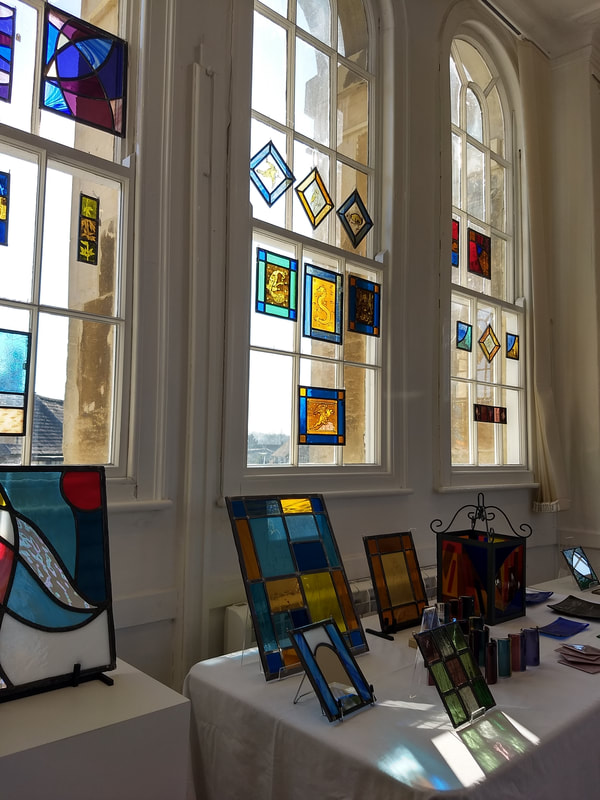 I will be in the gallery from 10.30-12.30 tomorrow, doing some demonstrations, if you would like to join me. Meanwhile, back in Charlbury, another project beckons: a long thin 'arrow slit' window, in a modern house, built in traditional Cotswold materials. Some ideas are already bubbling away...I see deep oranges and amber, rich blue... This could only be by one person - Marc Chagall. What a treat to call in at a small Church in Tudeley, near Tonbridge, on the way back from a New Year's visit to family and friends, and to be greeted by an entire scheme of twelve gorgeous stained glass windows, full of the distinctive feeling and symbolism of Chagall, including angels (above) and asses (below). The painting is loose and free and if you look closely - which you can, as most of the windows are at eye level - you can see all sorts of marks and scratchings made by Chagall even after they were installed. The work began with a commission for this large East Window above the altar, to commemorate an aristocratic and art-loving young woman who died aged 21 in a sailing accident. The story is that when Chagall came to see the window installed in 1967 he said' 'It's magnificent. I will do them all!'
He collaborated with the stained glass artist Charles Marq of the Jacques Simon workshop in Reims, and theirs seems to have been as close a working partnership as John Piper and Patrick Reyntiens. Chagall only began working in stained glass in his seventies and he was still working in glass in the year of his death at the age of 98. That's what I call a long and creative life. A positive way to start 2019. On Saturday I was in the glass workshop in Ely Cathedral, at the beginning of a day course on stained glass painting techniques with Pippa Blackwell. I had brought with me the outline of a creature I believed was a dragon, but my fellow student Julia was more knowledgable about heraldry and she immediately recognised it as a wyvern - a two legged creature with wings and horns. Good to know! I had been waiting months to do this course and it was satisfying to learn how to use the long rigger brush properly with the hand-rest, to make confident and lively lines. Then we got it fired quickly (in a rather crowded garage next to the cathedral) before applying a matt of paint all over, smoothing it out with the badger hair brush and beginning to work into that with a stiff little brush - that is how I created texture in the wings and what I hope suggests a slimy sheen down his tail. Finally, we applied silver stain on the other side, which is what gives the golden colour and it is this which is the origin of the term 'stained glass'. Then it was fired again to take home. Now I can ponder how best to frame it. A rich royal blue I think. The weekend was rounded off with a nostalgic wander around Cambridge (I studied History of Art there). My head full of paint and stain, we sought out the work of John Piper and Patrick Reyntiens in the chapels of Churchill College and Robinson College, both built after the Second World War. In recent times, the builders of new Oxbridge colleges have had very ambivalent feelings about whether there should be a chapel at all - especially at Churchill, which was founded to support the sciences and technology in particular. But surely it is a good thing to have a contemplative space within each college, where students and staff can sit occasionally and watch pools of coloured light fall onto the floor? Somewhere to put their 'essay crisis' or departmental wrangles into perspective? I hope you enjoy the slideshow below. I am currently a Christmas elf, getting on with my preparations for my Open Studio on 24/25 of November. I will be offering cards and small gifts alongside my stained glass work. Please see the Charlbury Christmas Artweeks map here.
I spent last week creating two Christmas cards to print in linocut. The first is a complex folded creation with the Three Ships sailing in - note to self: a three page card with 6 pieces of printing is rather labour intensive, but I am pleased with the outcome. The second card is a portrait of our dear cat, Georgie, sitting on the dining room windowsill. She, of course, declined to pose as requested. Luckily, I am very familiar with her habitual pose. I do like black and red and the qualities of printing by hand. I don't have a press; I am quite happy using the back of a wooden spoon. Now I am making a couple of small mirrors in leaded glass; one in seascape colours, the other in heathery landscape colours and textures. Meanwhile, my hanging glass stars are safely salted away in chocolate boxes, along with other pretty decorations. Soon I will have to source some locally made mulled wine syrup...which I hope to offer you when you visit. I am just back from Sardinia, looking at my sketch books. I loved the strange cork oaks you see all over Sardinia, stripped of their bark. The bark takes 12 years to grow back before it can be harvested again. I also used my camera to capture the way the cork oaks are swept by the prevailing winds in the rugged uplands in the centre of the island, below. Sardinia is full of wonderful archaeological remains - hundreds of bronze age stone structures called 'Nuraghe', and I enjoyed seeing the artefacts found at these sites. For my own work, I am always on the look out for pattern, and for expressive detail, which I like to analyse a bit further on my return. I even found a dragon's head amongst the exhibits in the Museo Archaeologico in Cagliari - I am currently on the look out for dragons as research for my next commission, a dragon panel for a cottage door. The challenge is to find some friendly (but not cutesy) dragons. This one, part of a Roman lamp, is impressive, but not definitely not friendly.
I wanted to create something rich and delicious for an exhibition at West Ox Arts called 'Food'. I was thinking about the highlight of being invited to dinner at an Oxford college, in my opinion: after the three or four courses comes an optional course - 'dessert'. Taken in a candlelit panelled room, with port, dessert wines, cheeses, fruit, nuts and little chocolates...and of course, mellow and free-flowing conversation. 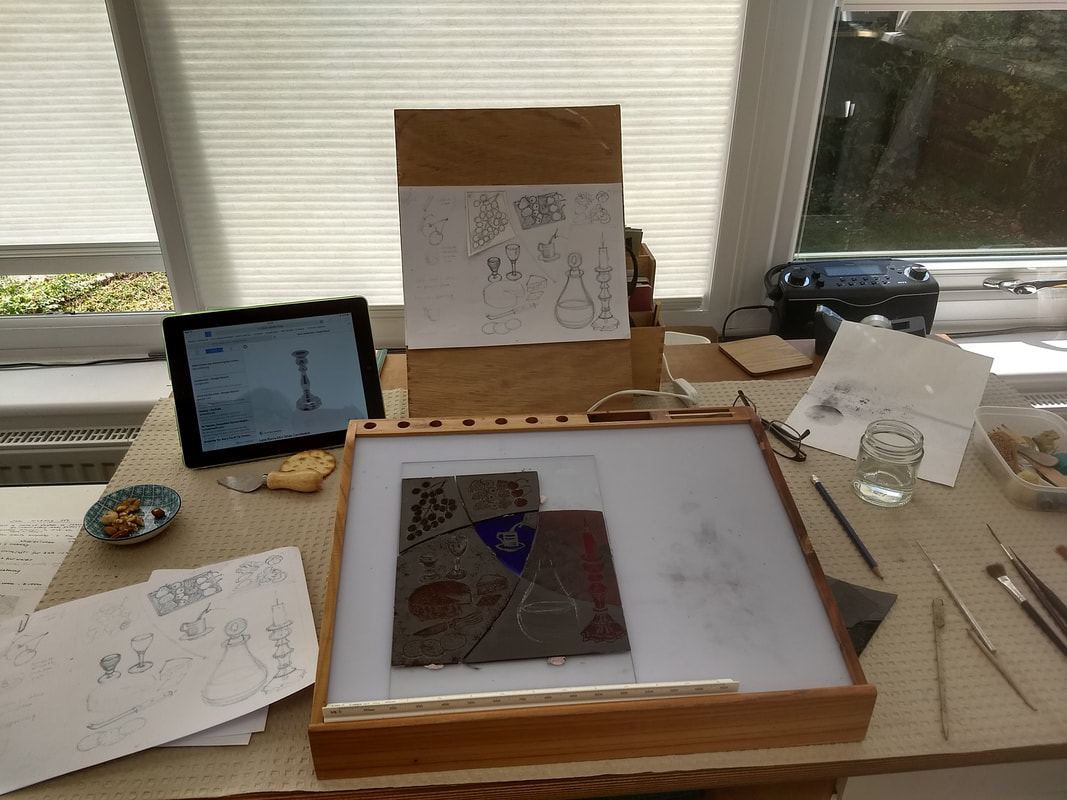 Clearly, this was going to take some researching, but the nuts and crackers were just for drawing, as I never eat in the studio, given how poisonous my medieval materials are. 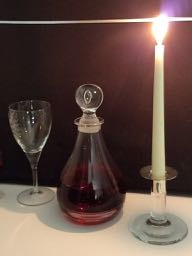 Slowly, the design developed, and I needed to observe the effect of candlelight on the glass decanter. 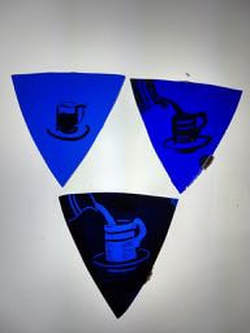 I tested three different ways of painting the little coffee cup. 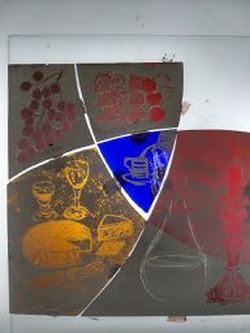 It was all starting to come together, although it is hard to judge the overall effect until the painted pieces are fired in the kiln. The pieces were painted, fired, leaded, cemented and ready to go. I aimed to continue the line of the lead in the suggested edge of the table behind the decanter and the candlestick. I blacked the leads with grate polish to give them a glossy dark finish. Then it seemed a shame not to make a 'baby' dessert to go with it: just coffee, port, cheese and grapes. Very civilised. Both panels will be on display at West Ox Arts from 25 August to 17 December and are for sale at £325 and £125.
|
AuthorI am a glass artist based in Charlbury, Oxfordshire. I work in stained and fused glass. I work to commission and teach stained glass in my studio. I open my studio to visitors during Oxfordshire Artweeks. Archives
July 2023
CategoriesStay in touchTo follow my blog in your favourite browser please click on the RSS Feed button below. You can find me on social media or just subscribe
to my newsletter. |
Copyright © 2015
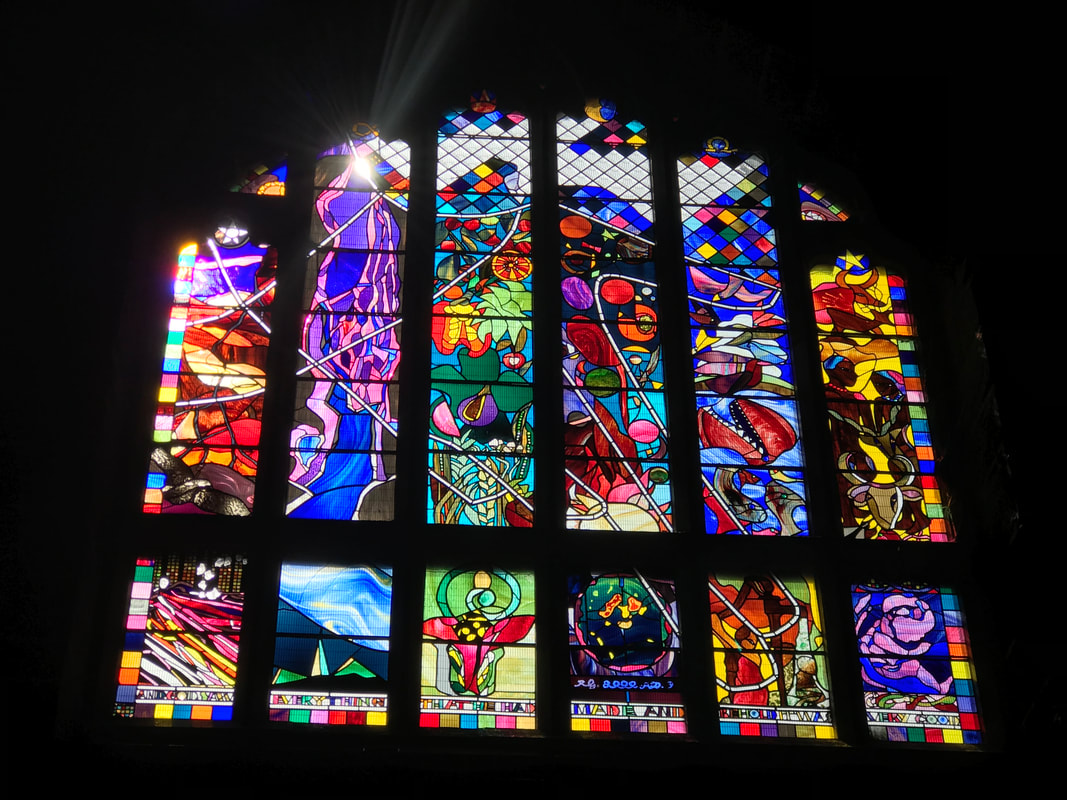
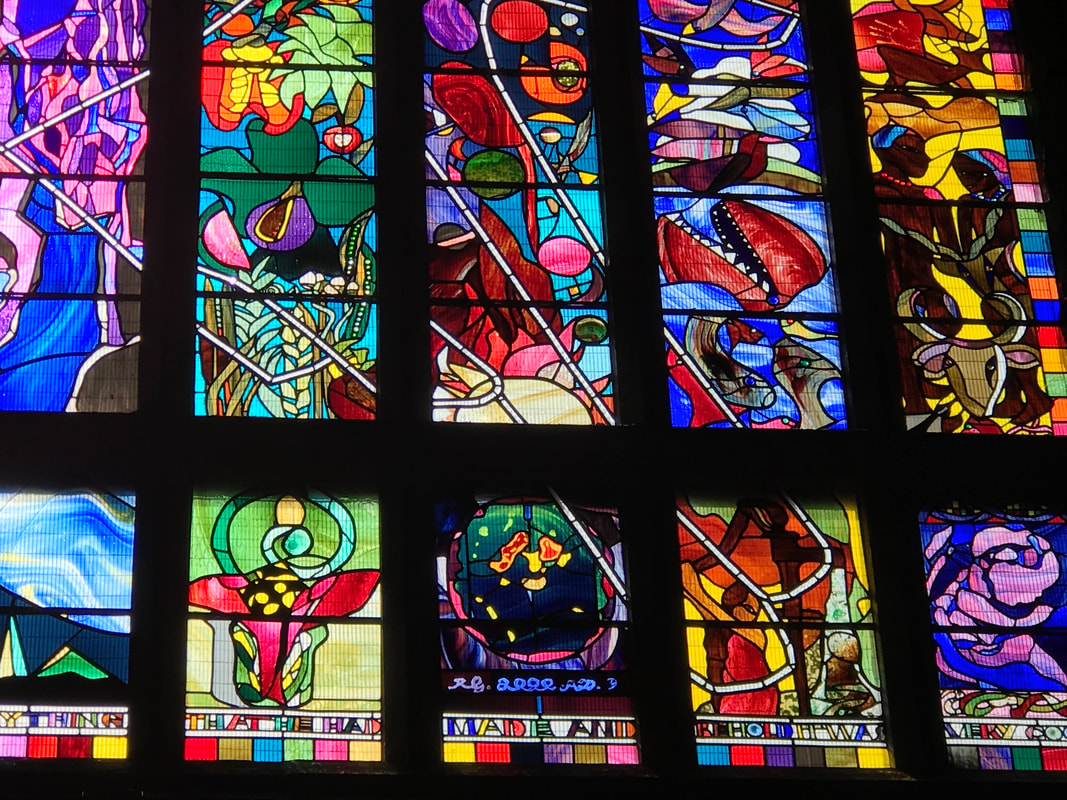
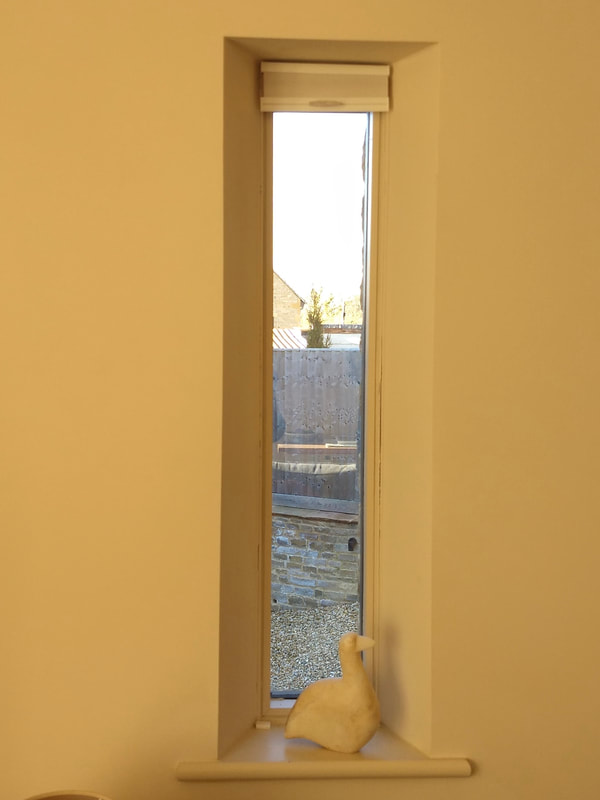
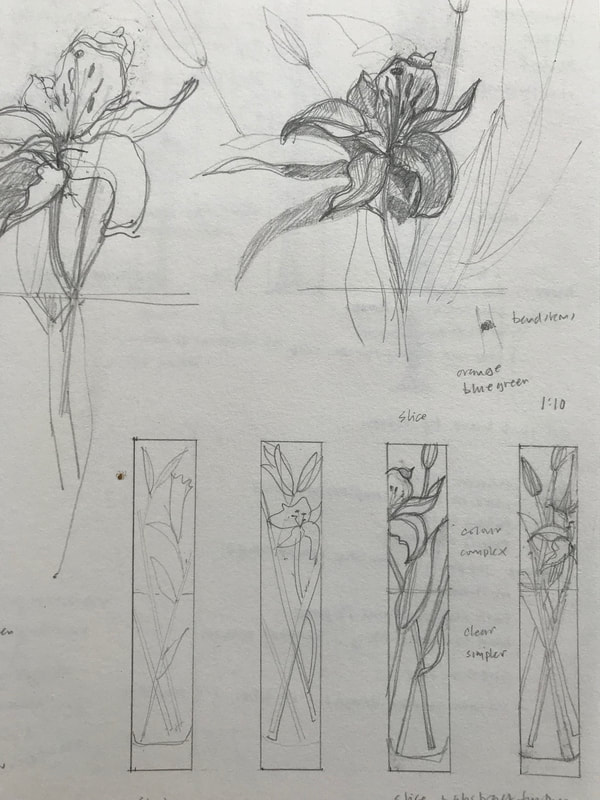
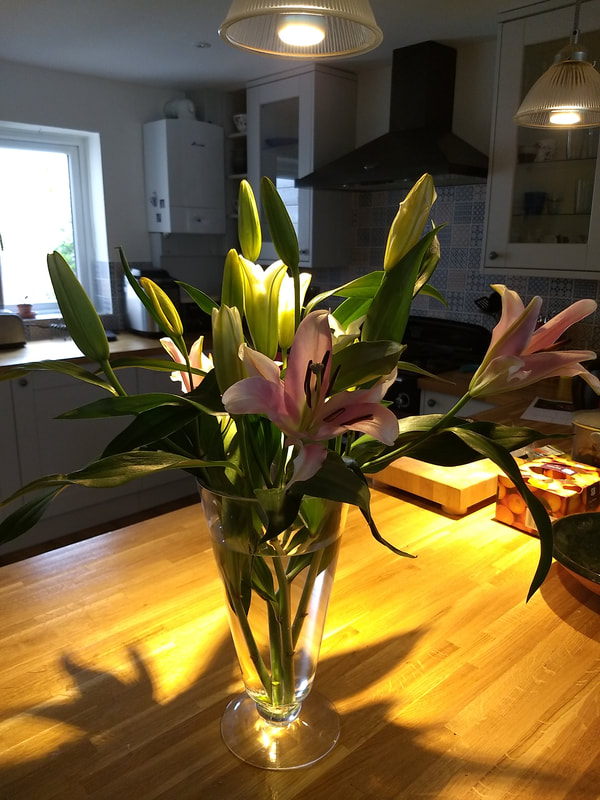
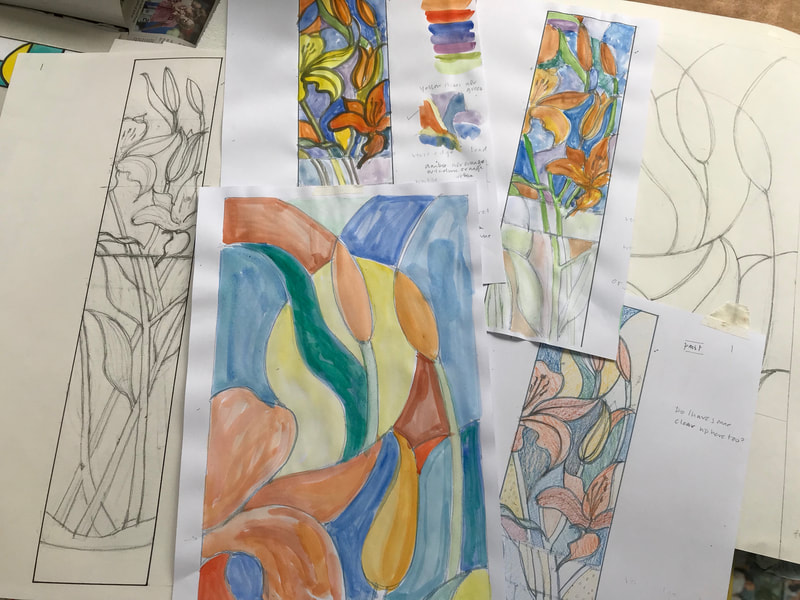
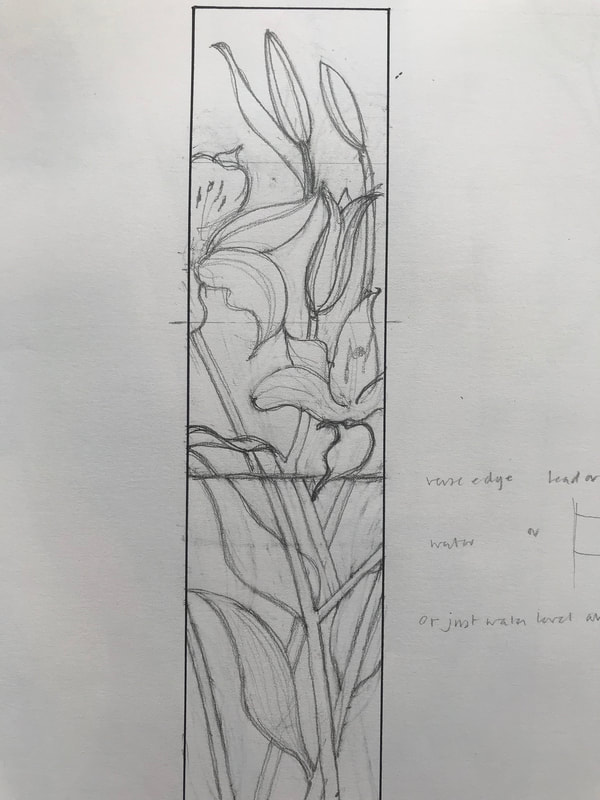
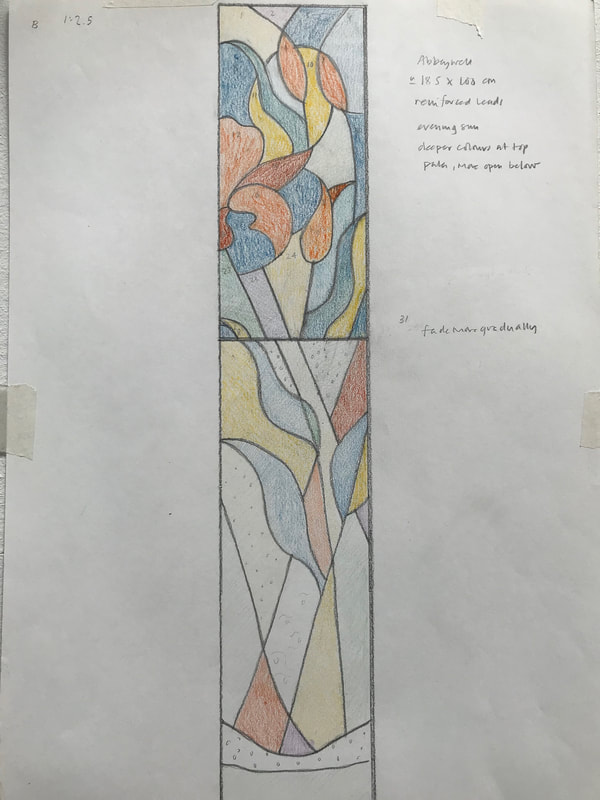
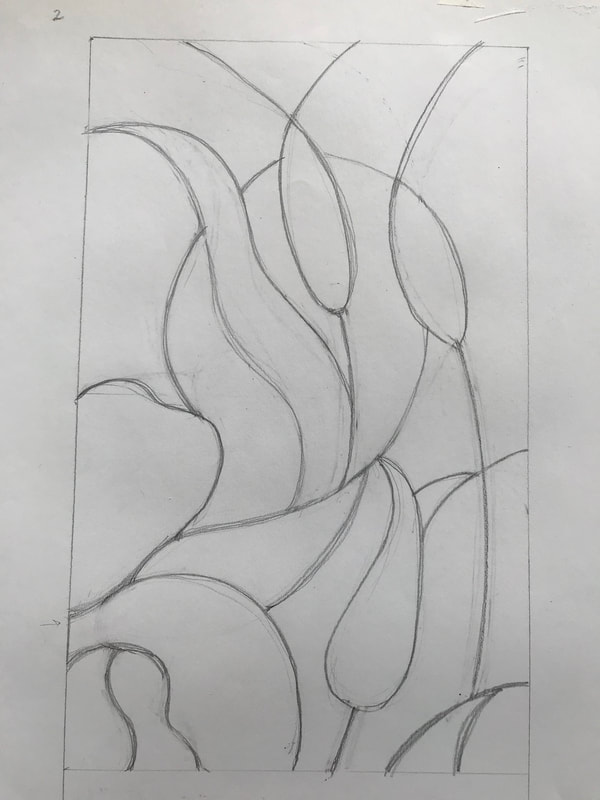
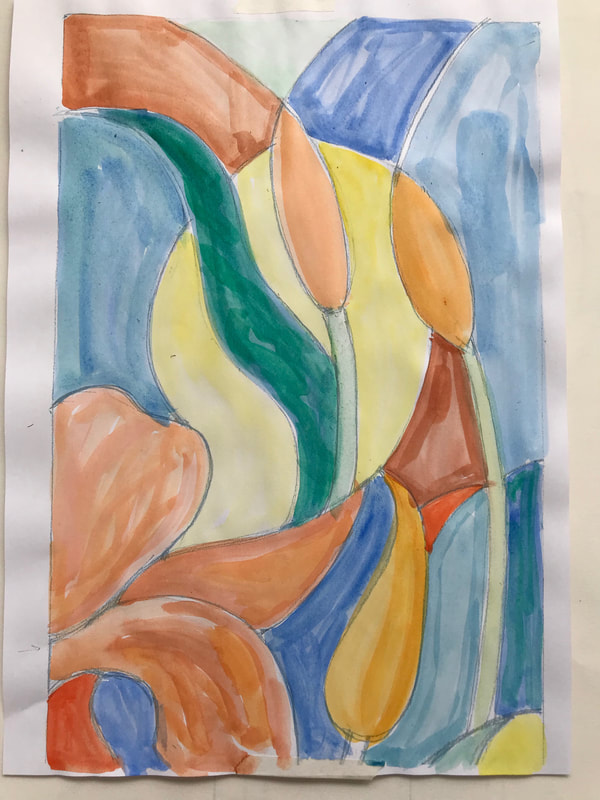
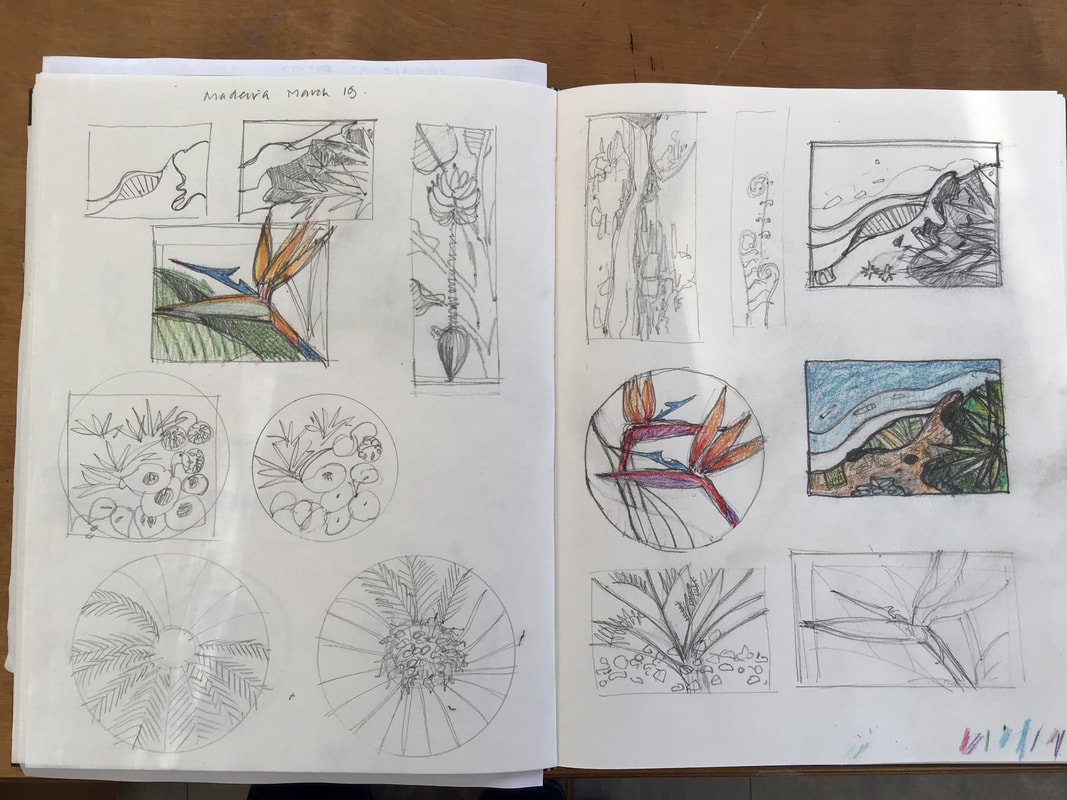
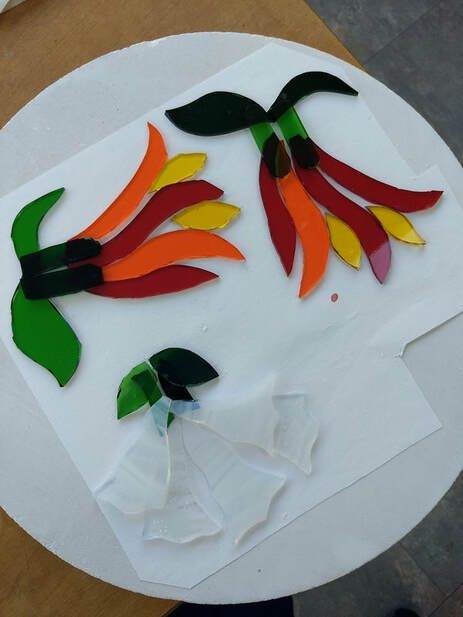
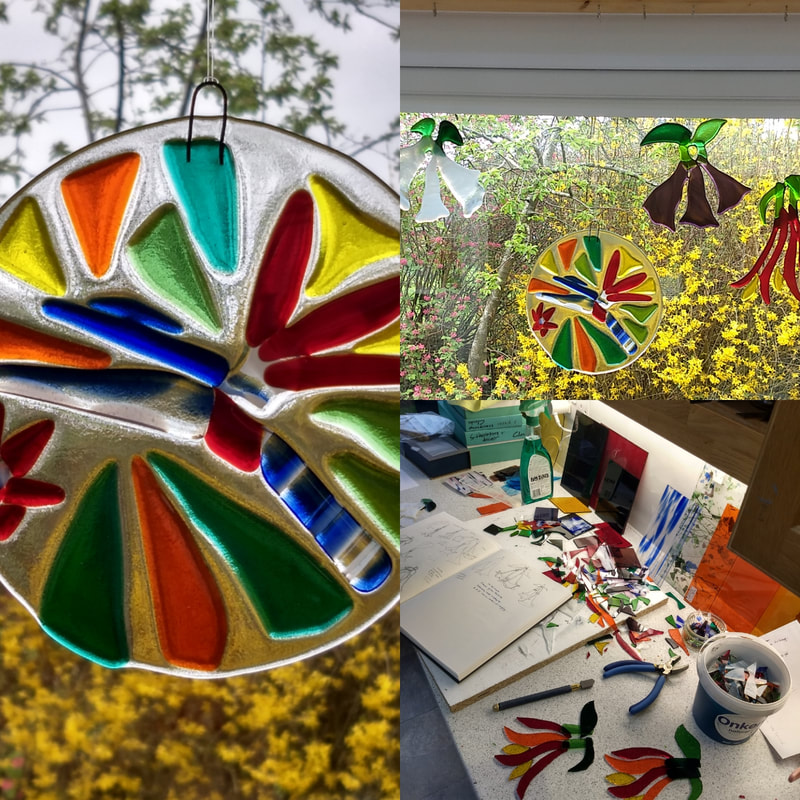
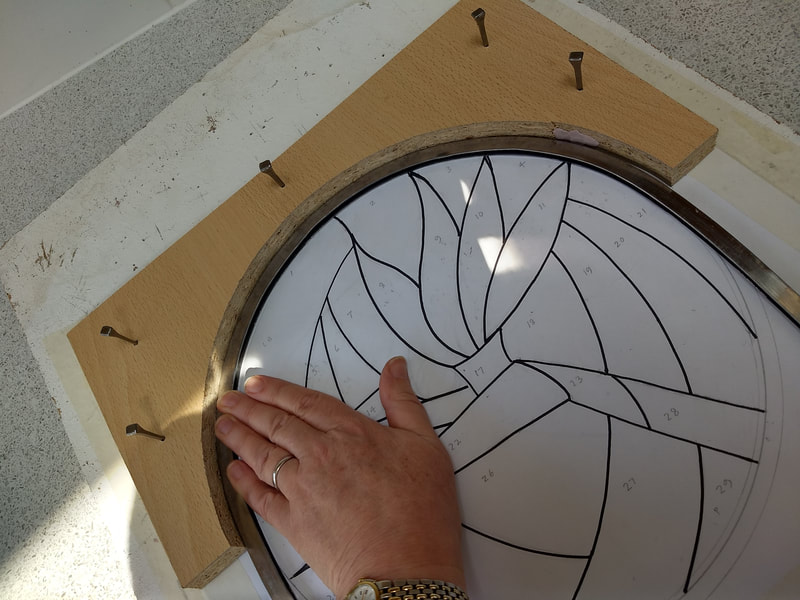
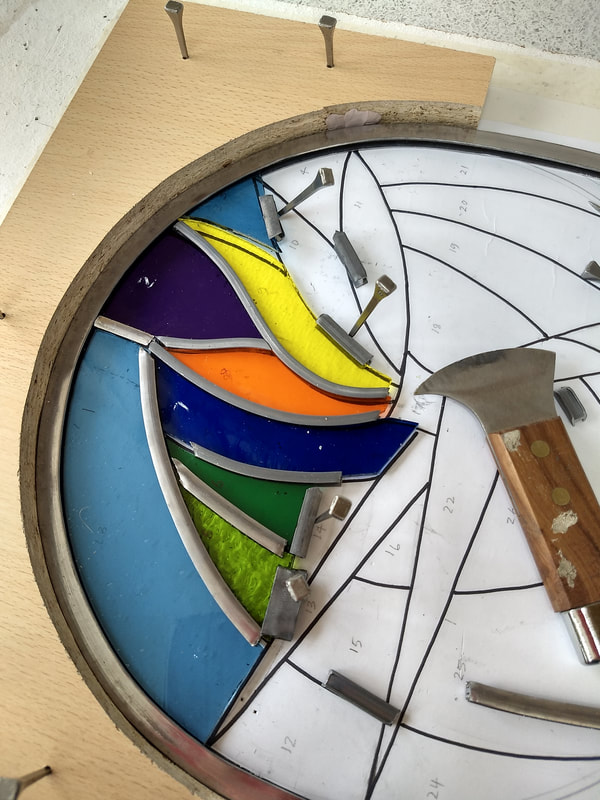
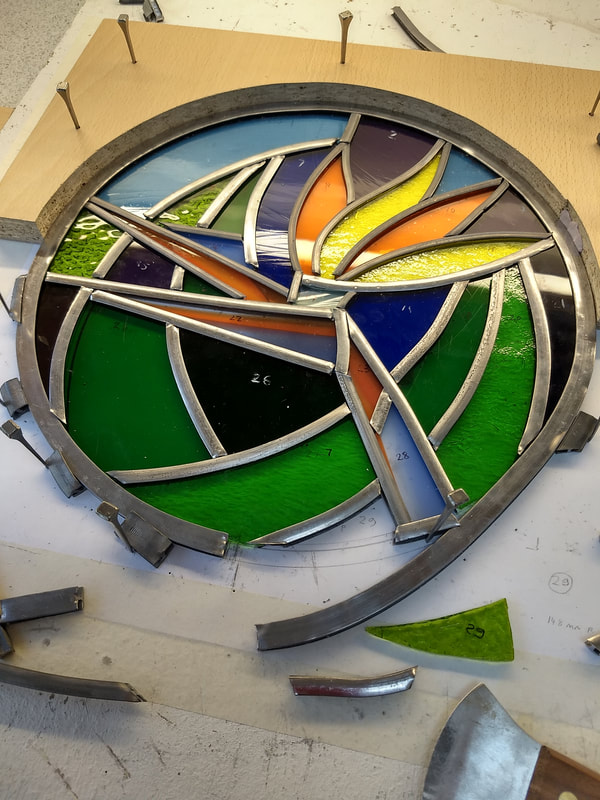
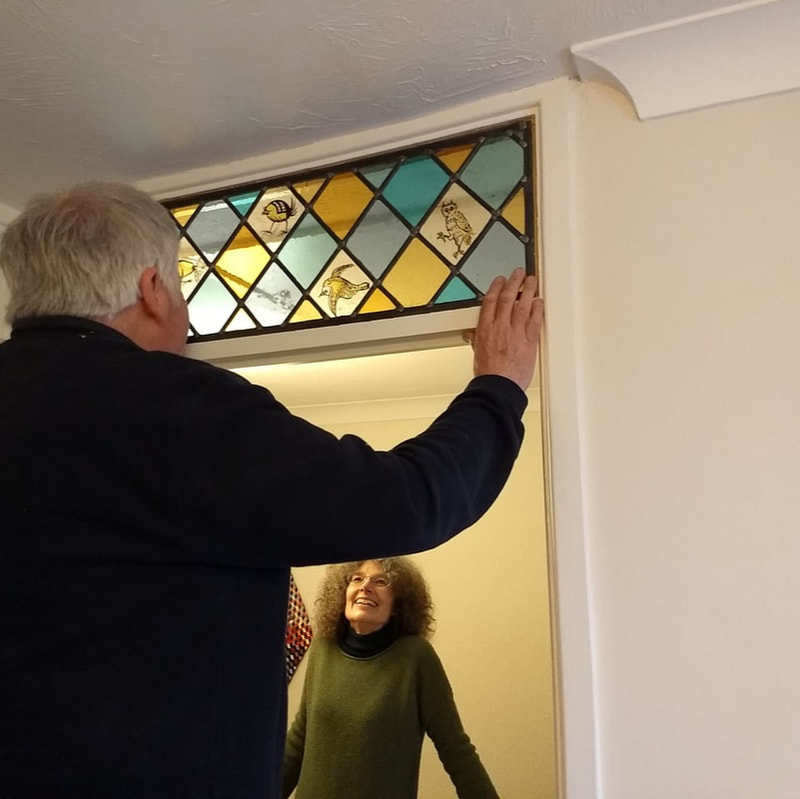
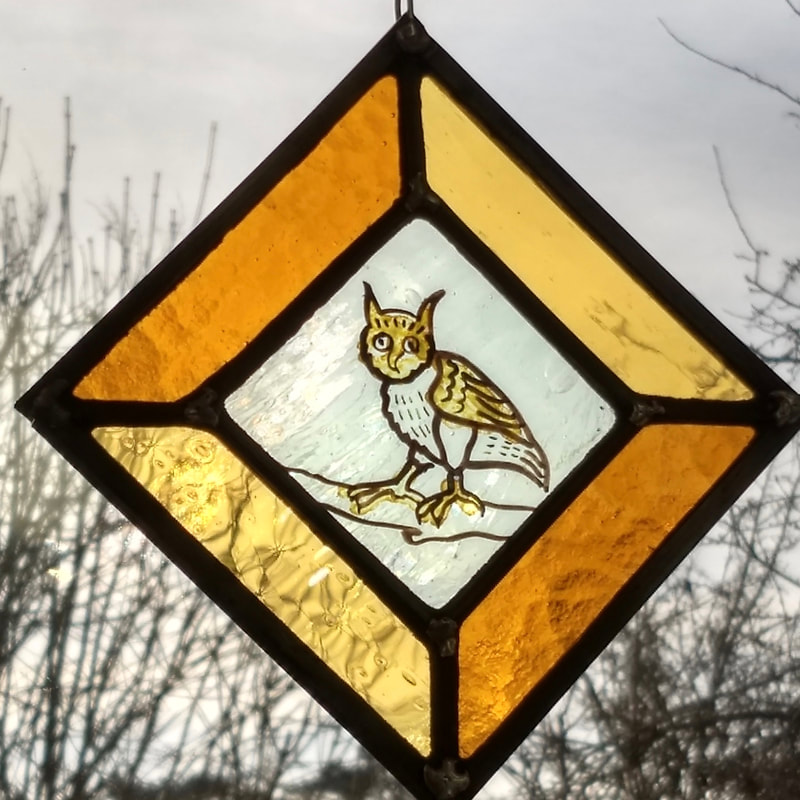
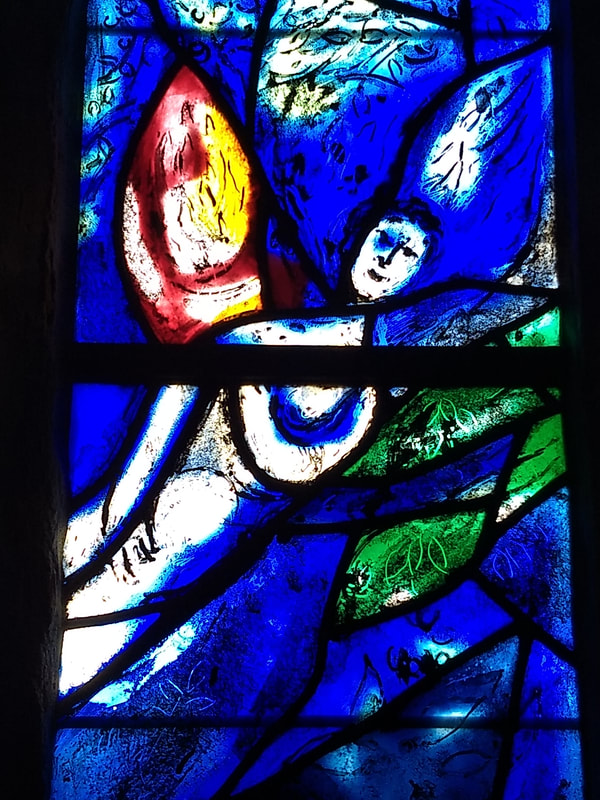
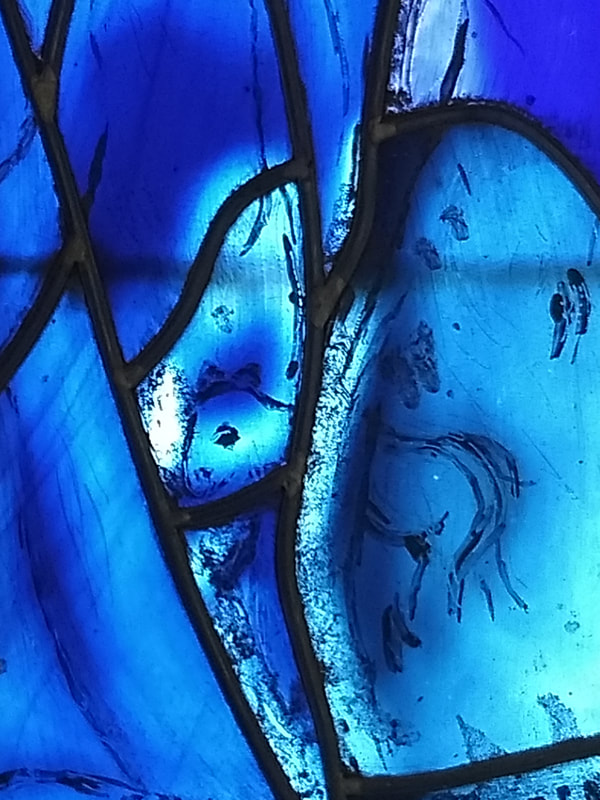
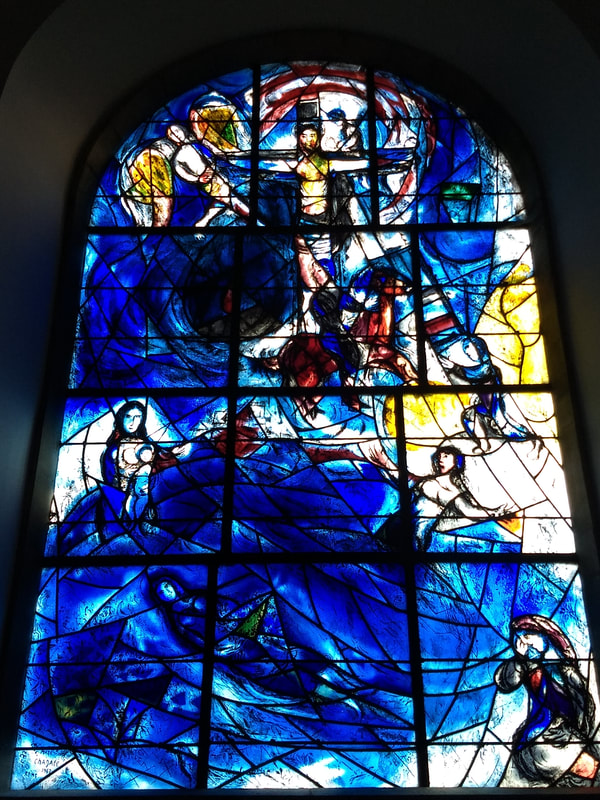
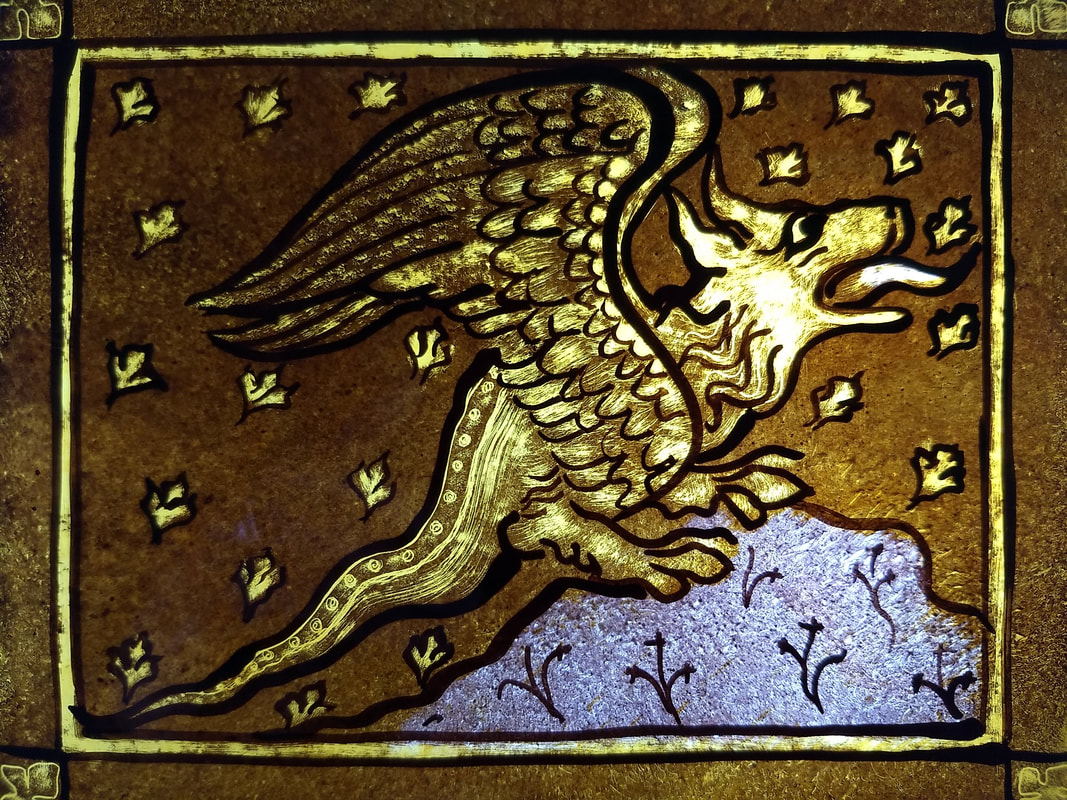
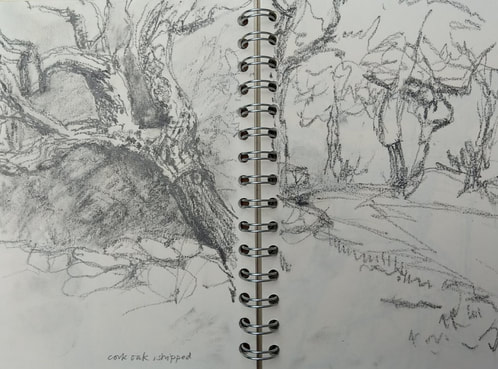
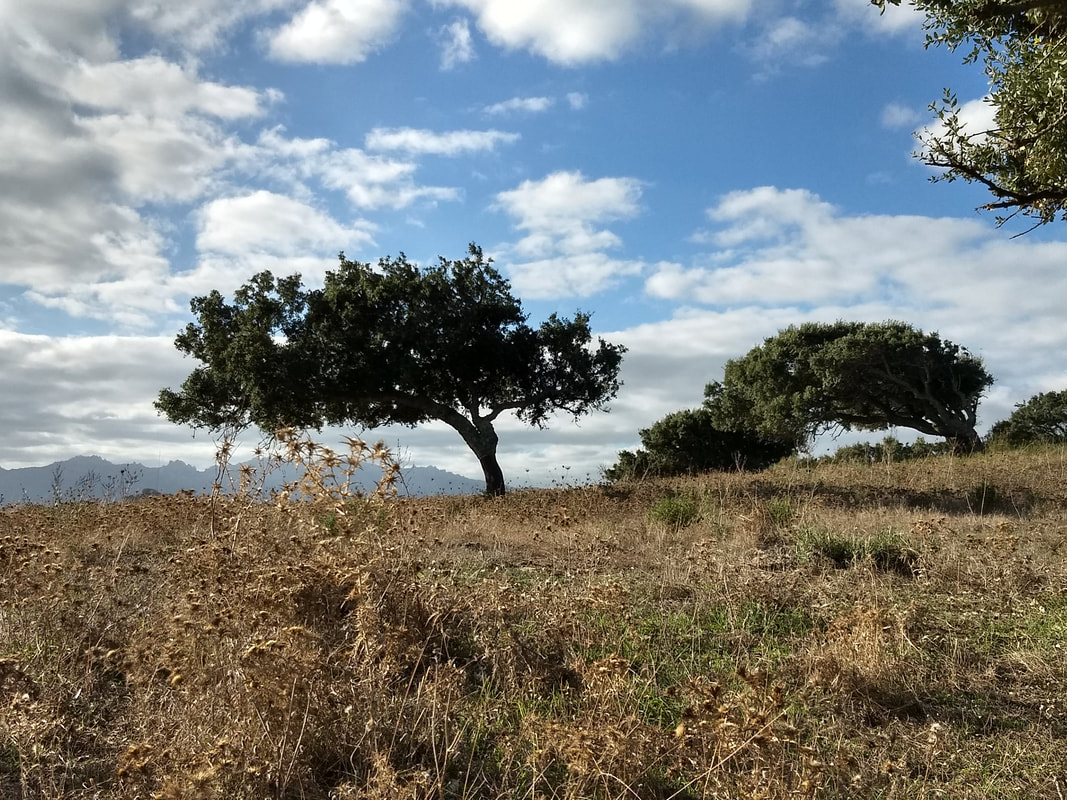
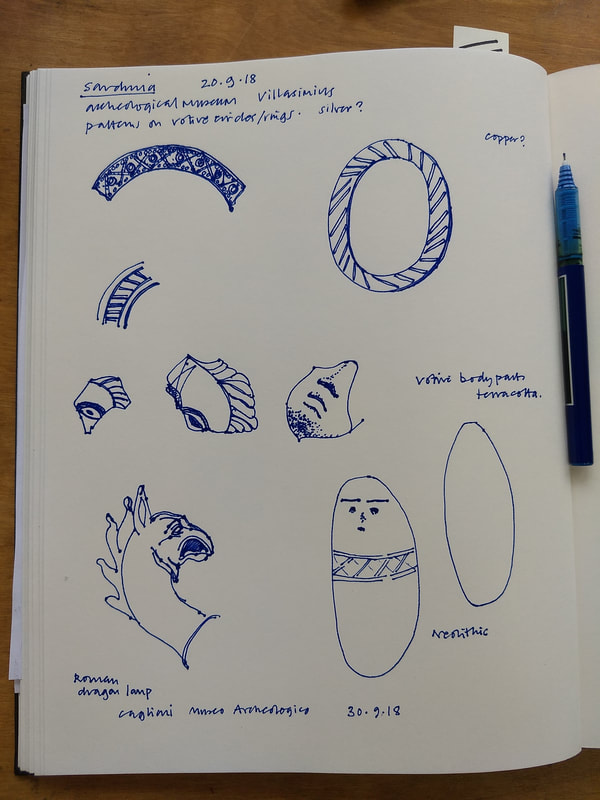
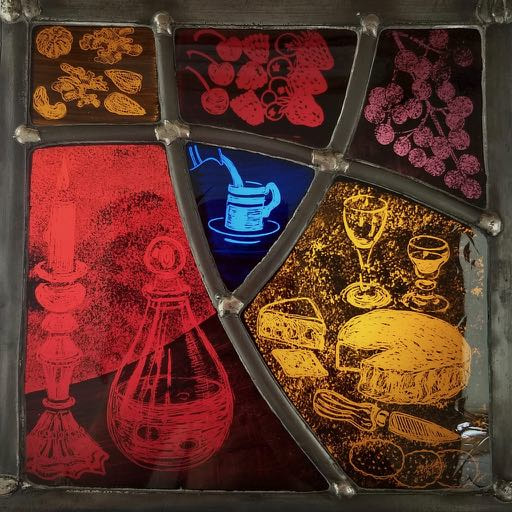
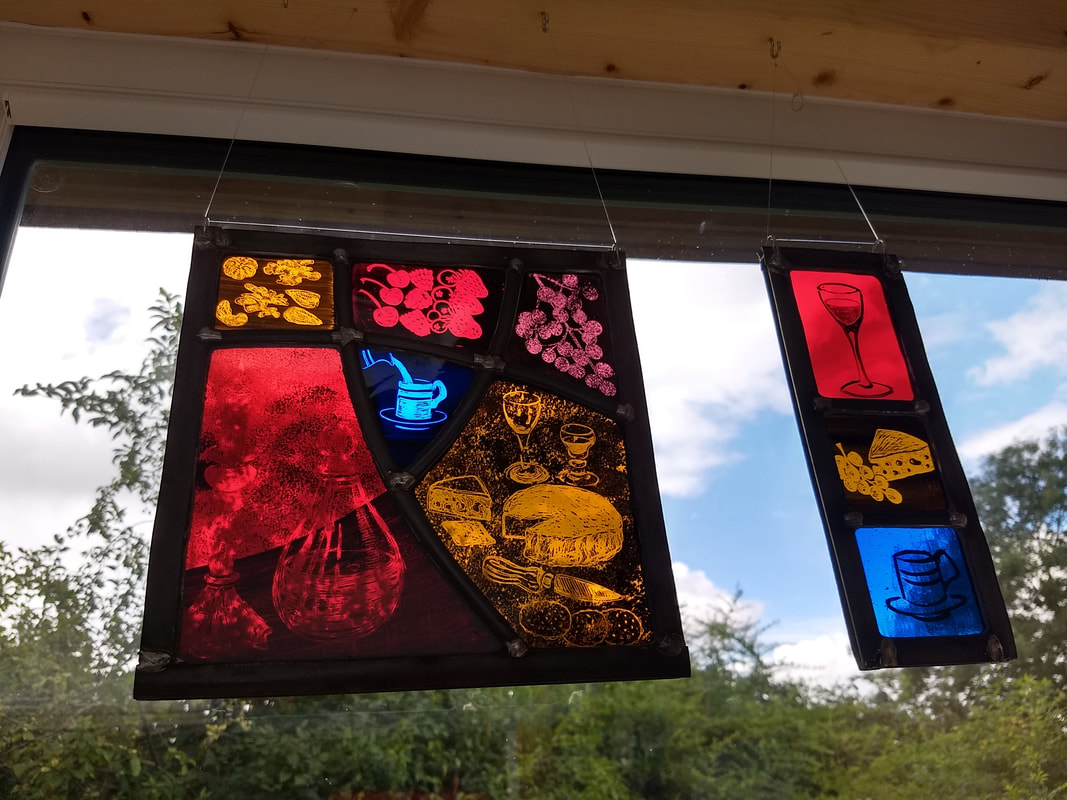
 RSS Feed
RSS Feed